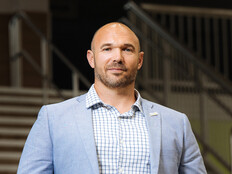Let’s Get Real: Virtual Reality Is Here to Stay
Remember when taking a field trip involved packing a sack lunch, getting on a school bus with the entire third grade and riding to the nearest museum? It was an all-day experience that involved sightseeing, but only in fairly close proximity to your school building.
Kids today are rocketing off to Mars and exploring the pyramids in Egypt. With the blink of their eyes, they’re studying the Great Barrier Reef up close, or checking out U.S. landmarks we once only read about in textbooks or saw during summer vacations.
Virtual reality is expanding these kids’ horizons. Imagine a child in rural Georgia being able to travel to the top of the Burj Khalifa in Dubai, the tallest building in the world at 2,722 feet.
VR Engages Students' Imaginations
Experts say virtual reality will revolutionize education. What once was the stuff of heavy, dusty textbooks can come alive in a child’s imagination, thanks to several companies that have invested in the technology and schools that have latched on to it.
As a former literacy and curriculum specialist, I am all for promoting reading on a variety of topics. While reading, you can imagine the world outside your day-to-day lives. Now, with VR, you can follow up your imaginings with a virtual trip to the place you just read about. You can see it for yourself.
Forecasters say that there will be five million Gear VR devices sold this year. Pair that with Google’s announcement that it has installed 5 million Cardboard VR viewers globally, and you get an idea of how pervasive VR is becoming. Facebook got in on the game by paying $2 billion for Oculus VR in 2014.
According to experts, 2016 is the year that VR will take off more intensely. The market is expected to grow to a $15.9 billion industry by 2019. By 2020, analysts from leading global bank Citi anticipate the market for hardware, networks, software and content will reach $200 billion.
Look at how the bring your own device phenomenon, commonly known as BYOD, has proliferated in schools. Will kids be bringing their own VR to classes next? It’s possible!
New Tech Could Prove to Be Useful Teaching Tool
Though snapping on a headset and traveling to parts unknown can be exhilarating, VR also has to be educational in order to be useful in schools. It has to become another integral part of a teacher’s toolkit. Luckily, the usefulness of VR goes beyond taking field trips.
“Anytime you want to have an inside view of something — an atom, a magnetic field, the human body, or a building — VR is really going to help you,” education tech expert Jeff Jacobson told THEJournal for a June article titled, “Augmented and Virtual Reality: Where Is the Educational Value?” Jacobson is the executive director of Boston-based PublicVR, a nonprofit that researches and develops VR software for education.
“For anything having to do with simulation of active things like physics problems or climate change patterns, if being in the middle of the simulation is helpful, then VR helps you,” Jacobson says.
This makes VR a helpful part of the curriculum in science, history, math, English, geography, history, languages and computer science.
The technology is gripping our imaginations, and schools would do well to plan for its inevitable arrival.
This article is part of the "Connect IT: Bridging the Gap Between Education and Technology" series. Please join the discussion on Twitter by using the #ConnectIT hashtag.
![[title]Connect IT: Bridging the Gap Between Education and Technology [title]Connect IT: Bridging the Gap Between Education and Technology](http://www.edtechmagazine.com/k12/sites/default/files/articles/2014/05/connectit.jpg)









